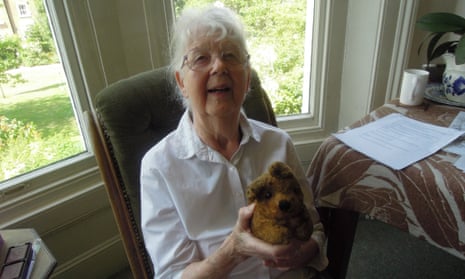First of all some exciting news… Shirley Hughes has won the inaugural Book Trust lifetime achievement award. And it couldn’t be more well deserved for the writer and illustrator of over 200 books. Shirley Hughes’ books have been part of our childhood and family life for more than five decades. Can you imagine a world without Alfie or Dogger? It’s almost unthinkable! So we were very excited when we got a chance to interview the author and illustrator who Philip Pullman describes as “a national treasure”, the one and only Shirley Hughes:
Do you think of yourself more as an illustrator or a writer?
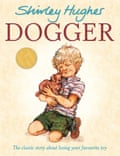
Oh very much an illustrator. I started as an illustrator of other people’s books and I did all kinds of stuff before I wrote my own books. My big break was illustrating the wonderful My Naughty Little Sister books by Dorothy Edwards. You’re as good as your text when you’re an illustrator and these books are terrific. Then someone suggested I should do a book of my own, and I wrote and illustrated Lucy and Tom – that was 55 years ago!
I was told my books were much too English to be accepted abroad but then I wrote Dogger, a book which is all about a jumble sale, so quintessentially English – and that was my big international breakthrough. Then of course Alfie came along. Alfie would be 35 if he grew up. But he’s not based on anyone in my family. Not my son Ed as is sometimes thought.
Do you people watch (and eavesdrop) to get ideas for your characters?
I don’t eavesdrop but I do lurk around with a sketchbook all the time. I’m very bad with a camera. But I’ve always kept a sketchbook and go out and watch in the park or somewhere and draw what I see. I particularly love drawing children. I observe the way they move, the way they crouch down and look at things, then all jump up and run like a flock of starlings. The way they stand when they look uncertain. My character Alfie comes from all that observation and so do all the other children. If you photograph something you don’t remember but I think if you draw something, it’s in your head. And then you can go home and make it all up.
You’ve won the Kate Greenaway medal twice, you’re an OBE and you’ve just won the Book Trust lifetime achievement award. What do you think of as your greatest achievement in life?
Bringing up three children! But in my professional life I think it’s getting children, including very little children, to read. Reading isn’t a competition. It isn’t how many words you can read. What even tiny children can do with a book is make their own personal exploration of a story. I think books are a wonderful piece of technology, I hope they survive. There’s never been a time for an ideal childhood, mine certainly wasn’t, but I do think that if there’s anything wrong with childhood today is that there’s too much on offer and everything moves at great speed. What I want children to do is linger, turn the page, see themselves as readers long before they can read.
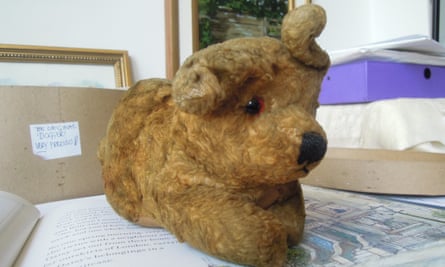
What I love about your books is that even when I got too old for the stories I still kept them for the beautiful illustrations (this comes from site member LottieLongshanks). I especially like the pictures in Dogger because there is so much going on. Do you have a favourite illustration that you have done?
Oh that’s a difficult one. I couldn’t choose one. You give the best you can to all the illustrations. When it comes to colour work, I love a book Out and About. This is for VERY young children, pre-Dogger age and I had a marvellous time with it, all the tactile things, the sand, seaside and playing with hosepipe.
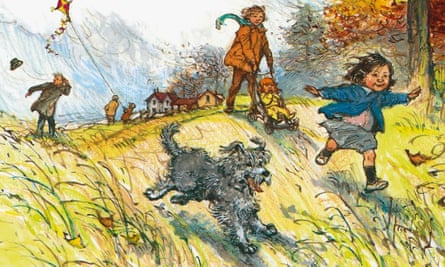
Did you have to do a lot of research to get the history of your book The Lion and The Unicorn right or did it come from your memories?
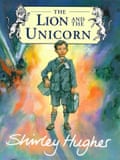
I wasn’t evacuated, thank goodness, but we had evacuees in the Wirral where I lived, they came from Liverpool. I loved doing the Lion and Unicorn. I was inspired by visiting a big country house full of beautiful paintings. In it there was a side passage for the servants and on display there were all the photographs of the little evacuees that were there during the second world war. It came to me what it would have been like to be a little boy suddenly finding himself away from home. People try to be kind, but he wets the bed and really can’t cope. He’s helped by a marvellous girl who is a servant there. His refuge is a garden with a statue of unicorn in it and one day he meets a man there there who’s only got one leg and of course he’s a wounded war hero. The two of them are heroically battling about what life hands out to them. I know my books make people cry, but I say make them laugh, make them cry and keep them guessing!
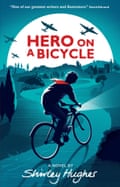
What made you start writing books for older children? Why have you waited so long to write your fist novels!
I can’t answer that! I just suddenly thought I would and wrote Hero on a Bicycle which is all about prisoners of war, a very heroic tale. Nobody encouraged me to before, they wanted me to do picture books and I still do. I just came to it late. I never even tried to write novels before!
Were the characters of Whistling in the Dark based on people that you knew and thing that happened to you?
None of the dramatic things that happened in this book happened to me, but I was doing the normal stuff that Joan and her family did in the book, queuing for rations and sweets, that kind of thing. The actual events of the book are all my imagination. It’s strange to think that as Liverpool was being blitzed, we wondering if the seams on our stockings were straight, if anyone was going to ask us to dance, and if our hair was all right. It was actually utterly boring and dreary in the war.

Do you believe Ania in Whistling in the Dark will ever find her father again?
Ahhh that is a sad one. We all hope that she will. Maybe there’s another book there.
What did you like best and least about school?
I didn’t like school much. I wasn’t very good academically. I swanned along and I was passionately keen on art. In the wartime it was absolutely freezing at school, we huddled along together. I left as soon as I could and went to Liverpool Art School when I was 16, to study history of costume. Later I decided to be an illustrator but I do think a book is a little theatre.
You have written for different age groups. From babies to adults with Bye Bye Birdy (an adult wordless book), Do you have a preference? - and why?
I have no preference . I loved working on my teen books but I would never give up illustrating. I am an artist. I always draw and paint – that’s what I’m programmed to do.
What is your favourite thing to do when you are bored?
I never am bored. I don’t suffer from boredom. But if I have nothing to do, I wander about the garden and chat to my friends and family.
What kind of books did you read a as child? What were your favourites?
I read a lot of annuals, and I loved Winnie the Pooh. Later I adored Just William by Richmal Crompton. I though he was a marvelous character and I still do.
Have you met the queen?
Yes. I was given my OBE by the queen. I doubt she’s read my books, she hasn’t got time! But she’s very gracious and delightful. I can’t think how she does it considering how many people she meets.
What advice do you have to people who want to write or illustrate books when they get older?
Keep drawing and don’t worry if the drawing doesn’t turn out like you want it to. Of course it’s not going to turn out how it looks in your head because pictures never do. But keep doing it, and alway keep a sketch book. And keep writing. If you see an interesting thing, jot it down or draw it. Be a magpie, that’s what all authors and illustrators do.
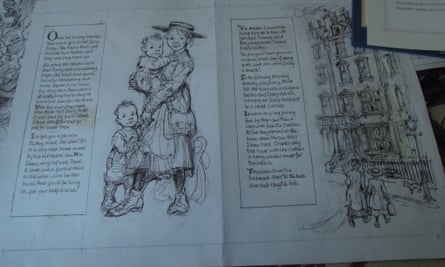
Are you writing any new books now? Tell us about them!
At the moment I’m working on a book called Alfie and Bernard. Alfie has a friend called Bernard who is a character in lots of my Alfie books. I will reveal that in it that there is a scooter race and scooters are very, very hard to draw! Someone said when they are 16, Bernard is going to get the girl. But I want to assure everybody that Alfie and Bernard are never going to grow up and be teenagers. They are always going to be at pre-school.
Shirley Hughes’ latest book Whistling in the Dark is available at the Guardian bookshop. For some fascinating background see Shirley’s website whistlinginthedarkbook.com
- Thank you so much to site members Lottie Longshanks, Marsbar27, LivLoves2Read and book group and The Dixon Kings Readers book group for such great questions!
